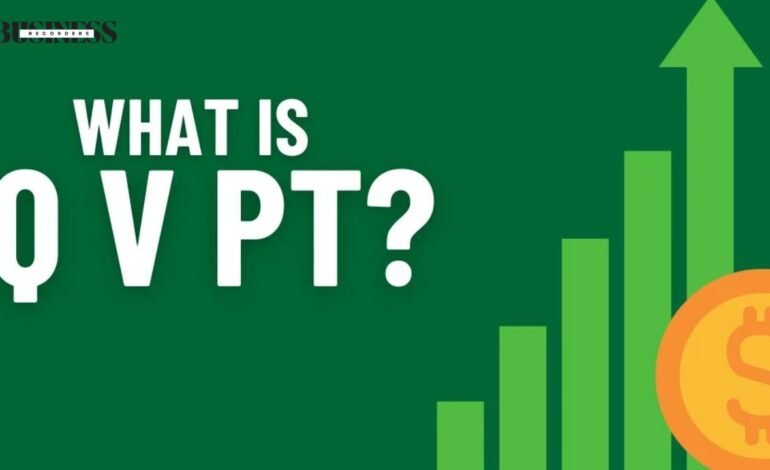
What is Q V PT?
The question what is q v pt may seem simple at first, but it leads to a variety of different interpretations depending on the context. Q V PT could stand for several things in different industries or fields. The combination of letters might represent a formula, framework, or even a technological process. Regardless of its exact meaning, understanding what is q v pt can be important for those looking to apply it in their own situations.
In this article, we will explore different interpretations of what is q v pt how it might be used, its potential benefits and challenges, and how it compares to other similar models. By the end of this article, you’ll have a better idea of what is q v pt and how it could potentially impact your work or learning.
What Does Q V PT Mean?
When trying to figure out what is q v pt it’s important to start by breaking down the individual components. In some cases, Q might stand for “quantity,” V could refer to “value,” and PT may represent a specific process or technique. These are just guesses, but they help to provide a structure that can be applied in various situations.
For instance, in the field of project management, Q V PT could refer to a way of measuring the value of the tasks being completed. Understanding what is q v pt in this setting would allow a manager to better assess how much work is being done, the value of that work, and whether the process being followed is the most efficient.
On the other hand, in fields like finance or engineering, what is q v pt might have a completely different meaning, with each letter representing a unique term or concept. The fact that Q V PT can be applied in so many different fields is one of the reasons it’s such a useful model to understand.
How Can Q V PT Be Used in Business?
Now that we have a basic idea of what is q v pt let’s look at how this concept might be applied in a business setting. Businesses are constantly seeking new ways to improve efficiency, increase profits, and measure progress. Understanding what is q v pt can help businesses develop a better system for managing their projects or workflows.
For example, if Q stands for “quantity” and V stands for “value,” then a business could use Q V PT to measure how much value is being created by each unit of work completed. This would allow business managers to see where their efforts are making the biggest impact and where improvements can be made. By incorporating what is q v pt into their daily operations, companies might be able to streamline processes and improve overall productivity.
Additionally, knowing what is q v pt could help businesses to develop key performance indicators (KPIs) that can be used to track success over time. If businesses can see how well they are performing through the lens of Q V PT, they can make better decisions about how to allocate resources or shift strategies.
How Is Q V PT Applied in Technology?
In the field of technology, understanding what is q v pt might lead to its use in software development, system optimization, or even data analysis. Technology professionals often rely on specific models or frameworks to help them structure their work. If Q V PT can be applied in this context, it could provide a method for measuring the efficiency and effectiveness of technology solutions.
For instance, Q could stand for “queries” in the context of database management, while V might refer to “validation” or “verification.” PT could be a technical process or procedure. Understanding what is q v pt in this way would allow engineers or developers to ensure that their systems are functioning correctly and producing accurate results.
By incorporating what is q v pt into software development processes, teams could better measure progress and determine how well their systems are performing. This model might also provide a way to troubleshoot problems or improve the overall quality of the software being produced.
What Are the Benefits of Using Q V PT?
Understanding what is q v pt can help us identify the potential benefits of using this model in various fields. Below are some of the key advantages that might come from incorporating Q V PT into your work:
- Improved organization: Knowing what is q v pt can help you create a more structured and organized approach to your work. Whether you’re managing a team, running a business, or working on a personal project, Q V PT can provide a framework that keeps things on track.
- Clear goals: Q V PT can help you set clear, measurable goals. By understanding what is q v pt you can break down your work into specific tasks and track progress over time.
- Better communication: When everyone on your team knows what is q v pt it becomes easier to communicate and collaborate effectively. This can lead to fewer misunderstandings and smoother workflows.
- Effective problem solving: Using Q V PT might make it easier to identify problems and find solutions. When you understand what is q v pt you have a clearer picture of where things are going wrong and what steps need to be taken to fix them.
What Are the Challenges of Using Q V PT?
While there are many benefits to understanding what is q v pt there are also some challenges that come with using this model. Below are a few potential obstacles to keep in mind:
- Learning curve: For people who are new to Q V PT, it might take some time to fully understand what is q v pt and how to apply it effectively. Training or experience may be required before you can get the most out of this model.
- Complexity: Depending on the specific interpretation of what is q v pt this model might be too complex for some situations. If Q V PT involves too many steps or processes, it could become overwhelming for teams or individuals to manage.
- Adaptability: While Q V PT can be applied in many different fields, it might not be the best fit for every project or business. Some situations might require a simpler approach, and trying to force Q V PT into these settings could lead to confusion or inefficiency.
How Does Q V PT Compare to Other Models?
Understanding what is q v pt also involves comparing it to other models that might be used in similar situations. There are many different frameworks out there that businesses, teams, or individuals can use to structure their work, measure progress, or improve efficiency.
One example is the SMART goal framework, which stands for Specific, Measurable, Achievable, Relevant, and Time-bound. This model is commonly used to help people set clear goals and track their progress over time. While it shares some similarities with Q V PT, understanding what is q v pt allows us to see how it might focus more on the value and process behind each task rather than just the outcome.
Another comparison could be made with the OKR (Objectives and Key Results) framework, which is often used in business settings to help teams set ambitious goals and measure their progress. While Q V PT might be more focused on specific tasks or processes, OKRs are typically used at a higher level to guide entire teams or organizations.
What Are Some Real-World Examples of Q V PT?
To fully understand what is q v pt it can be helpful to look at some real-world examples of how this model might be applied in different fields. Below are a few scenarios where Q V PT could be used:
- In a business setting: A company might use Q V PT to track the productivity of its employees. Q could stand for “quality,” V for “value,” and PT for “performance tracking.” By using this model, the business can see which employees are delivering the most value and where improvements can be made.
- In education: Teachers could use Q V PT to measure the progress of their students. Q might stand for “quiz scores,” V for “value-added learning,” and PT for “project tracking.” This would give teachers a clearer idea of how well their students are understanding the material and where additional support might be needed.
- In healthcare: Hospitals or clinics could use Q V PT to measure the effectiveness of their treatments. Q could represent “quality of care,” V for “value-based outcomes,” and PT for “patient tracking.” This would allow healthcare providers to see which treatments are working best and which areas need improvement.
What Is the Future of Q V PT?
As we continue to explore what is q v pt it’s possible that this model will continue to evolve and develop over time. As technology advances and new industries emerge, Q V PT could be adapted to meet the changing needs of businesses, teams, or individuals.
One possible direction for the future of Q V PT is the integration of artificial intelligence (AI) or machine learning. By incorporating AI into Q V PT, businesses might be able to automate parts of the process, making it easier to track progress, measure success, and adjust strategies in real-time.
Another potential future development is the expansion of Q V PT into new fields. As more people begin to understand what is q v pt they might find new ways to apply it in their own industries, leading to further innovation and growth.
Conclusion
In conclusion, understanding what is q v pt can provide valuable insights into how this model can be applied in different fields. Whether you’re working in business, technology, education, or healthcare, knowing what is q v pt can help you stay organized, set clear goals, and measure progress over time.
While there are challenges to using Q V PT, the benefits often outweigh the difficulties. By learning what is q v pt and applying it effectively, you can improve the way you work, collaborate, and achieve success.













